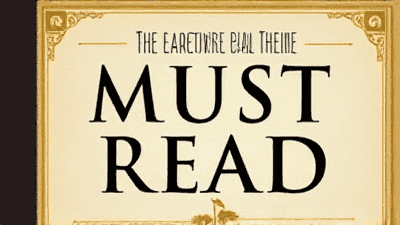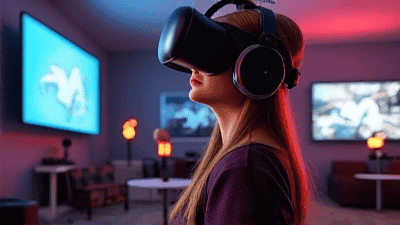
Shopping can be an enjoyable experience, filled with excitement and anticipation as you browse for new clothes, gadgets, or household items. However, beneath the surface of this seemingly innocent activity lies a web of psychological tactics and strategic marketing designed to entice you into spending more money than you originally intended.
Retailers invest significant resources into understanding consumer behavior and implementing techniques that subtly influence purchasing decisions. From store layout and ambiance to pricing strategies and sensory marketing, there are countless ways that stores manage to trick you into parting with your hard-earned cash.
The Psychology of Consumer Behavior
Understanding Consumer Psychology
Consumer psychology is the study of how people think, feel, and behave when purchasing products or services. Understanding the psychological triggers that influence buying behavior is essential for retailers, who seek to create an environment conducive to spending. By appealing to emotions, cognitive biases, and social influences, stores can manipulate shoppers into making impulse purchases.
The Role of Emotions in Shopping
Emotions play a pivotal role in consumer decisions. Positive feelings such as excitement, happiness, or nostalgia can lead to increased spending, while negative emotions might trigger purchases as a form of retail therapy. Retailers capitalize on these emotional responses by crafting experiences that evoke feelings of joy or comfort, thereby encouraging consumers to buy more.
Cognitive Biases and Decision-Making
Cognitive biases are mental shortcuts that influence decision-making. Many of these biases can lead shoppers to make irrational choices, often resulting in overspending. Retailers exploit these biases through pricing strategies, marketing messages, and promotional offers that play on consumers' subconscious associations.
Sneaky Tactics Used by Retailers

1. Store Layout and Design
The Gruen Effect
One of the most powerful strategies retailers use is the layout of their stores. The Gruen Effect refers to the phenomenon where shoppers become disoriented and lost in a store, leading them to spend more time (and money) than intended. This effect is achieved through carefully designed layouts that encourage exploration and impromptu purchases.
Strategic Product Placement
Retailers often place high-demand items at the back of the store to draw customers through multiple aisles, exposing them to more products along the way. Unexpected placement of products—such as snacks near checkout counters—can also prompt impulse buying when customers are waiting in lines.
2. Sensory Marketing
Sight and Sound
Retailers curate their atmosphere to create a specific shopping experience. Bright colors and appealing displays are strategically employed to attract attention while calming sounds or upbeat music can enhance mood and encourage longer shopping visits. Studies show that ambient music can influence the pace at which consumers shop, leading to increased purchases.
Smell and Touch
Scent marketing is another powerful tool. Stores often use specific fragrances to create a sense of comfort or nostalgia, triggering positive emotions that can lead to increased spending. Moreover, allowing customers to physically touch or try products (like clothing or cosmetics) can create a personal connection, making them more likely to buy.
3. Pricing Strategies
Psychological Pricing
Retailers implement psychological pricing techniques to influence purchasing decisions. Techniques such as pricing items at 9.99 instead of a round number make prices feel lower and more attractive. This practice is based on the perception of value, where consumers anchor their expectations based on specific digits.
Price Anchoring
Price anchoring involves presenting a higher-priced item alongside a lower-priced option, making the latter appear more attractive. For instance, displaying a high-end model at a premium price can make a mid-range option seem like a more reasonable choice, even if it is still relatively expensive.
Discounts and Markdowns
Sales and discounts can create a sense of urgency that prompts immediate purchasing decisions. Phrases such as "limited time offer" or "only while supplies last" can trigger fear of missing out (FOMO), encouraging consumers to buy on impulse rather than delaying their decision.
4. Promotions and Loyalty Programs
BOGO and Loyalty Rewards
Many retailers use buy-one-get-one (BOGO) deals or promotions that entice customers into believing they are getting more value for their money. While these offers can lead to increased sales, they may also encourage consumers to buy items they do not need simply to take advantage of the deal.
Emotional Appeals in Loyalty Programs
Loyalty programs create a sense of belonging and reward. When consumers feel valued as part of a club or community, they are more likely to spend money to earn points or rewards, often leading to excessive purchases in pursuit of benefits.
5. Social Influence and Peer Pressure
The Power of Social Proof
The concept of social proof suggests that people tend to look to others for guidance in decision-making. Retailers exploit this phenomenon through strategies such as customer testimonials, celebrity endorsements, and popular product placements. When consumers see that others favor a product, they are more inclined to follow suit.
Scarcity and Urgency
Creating a sense of scarcity around products can increase their perceived value. Phrases like "limited stock" or "exclusive offer" play into the fear of missing out, prompting consumers to rush their purchasing decisions.
6. Checkout Psychology
Impulse Buys at the Register
The checkout area is strategically designed to maximize impulse purchases. Retailers stock small, low-cost items such as candy, magazines, and gadgets near the register to tempt customers during moments of waiting. This practice leverages the psychological principle of convenience: making it easy to add items to the cart increases the likelihood of unplanned spending.
Digital Checkouts
With the rise of digital shopping, online retailers have implemented similar strategies through product recommendations during the checkout process. These recommendations often suggest complementary products or popular items based on consumers' browsing history, encouraging additional purchases.
The Consequences of Overspending
Financial Strain
Uncontrolled spending can lead to financial difficulties and stress. Many consumers find themselves accumulating debt as a result of impulse purchases fueled by the enticing tactics of retailers. This financial strain can have long-lasting effects on individuals and families.
Regret and Buyer’s Remorse
After spending more than intended, many consumers experience feelings of regret or remorse. This emotional fallout can negatively impact mental health, leading to dissatisfaction with purchases and overall shopping experiences.
The Impact on Consumer Behavior
As consumers become more aware of these retail tactics, they may develop a sense of skepticism. While this can lead to more cautious spending habits, it may also make individuals feel overwhelmed or confused in their purchasing decisions. Finding a balance between enjoying the shopping experience and remaining mindful of spending is essential.
Tips for Avoiding Impulse Spending

1. Create a Shopping List
Before heading to the store, create a detailed shopping list of the items you need. Sticking to this list can help you avoid distractions and resist the temptation to buy unnecessary products.
2. Set a Budget
Establishing a budget is a powerful strategy for controlling spending. Decide how much you can afford to spend before shopping and make a commitment to adhere to that limit. Consider using cash rather than credit cards to reinforce your budgetary constraints.
3. Practice Delayed Gratification
When you encounter an enticing product or sale, practice delaying your purchase. Give yourself a cooling-off period of 24 hours to consider whether the item is genuinely necessary before making a decision. This approach can help break the cycle of impulse buying.
4. Avoid Shopping When Emotional
Emotions heavily influence purchasing behavior. Avoid shopping when you are feeling stressed, bored, or anxious, as this can lead to impulsive decisions. Instead, shop when you are feeling positive and clear-headed.
5. Be Aware of Retail Tactics
Educating yourself about the tactics retailers use can empower you to recognize manipulation when it occurs. Understanding how store layouts, pricing strategies, and promotions are designed to influence behavior can help you make more intentional purchasing decisions.
6. Consider Online Shopping
Consider doing your shopping online, where you can avoid the physical manipulation of store environments. Take advantage of the ability to compare products, read reviews, and do research before making a purchase. This method can help you avoid impulse buys prompted by in-store marketing.
Conclusion
The art of shopping is intricately woven with psychological tactics and strategies employed by retailers to enhance consumer spending. By understanding the sneaky ways stores trick you into spending more money, you can arm yourself with knowledge and make smarter purchasing decisions.
From store layouts and sensory marketing to psychological pricing and social influences, retailers know how to tap into our emotions and biases to drive sales. By being aware of these tactics, creating shopping lists, setting budgets, and practicing delayed gratification, you can minimize impulse buys and take control of your spending habits.
As you navigate the complex landscape of retail, remember that shopping should be an enjoyable experience, free from the pressures to overspend. With the right tools and strategies, you can engage in responsible consumerism while still enjoying the thrill of the hunt.








